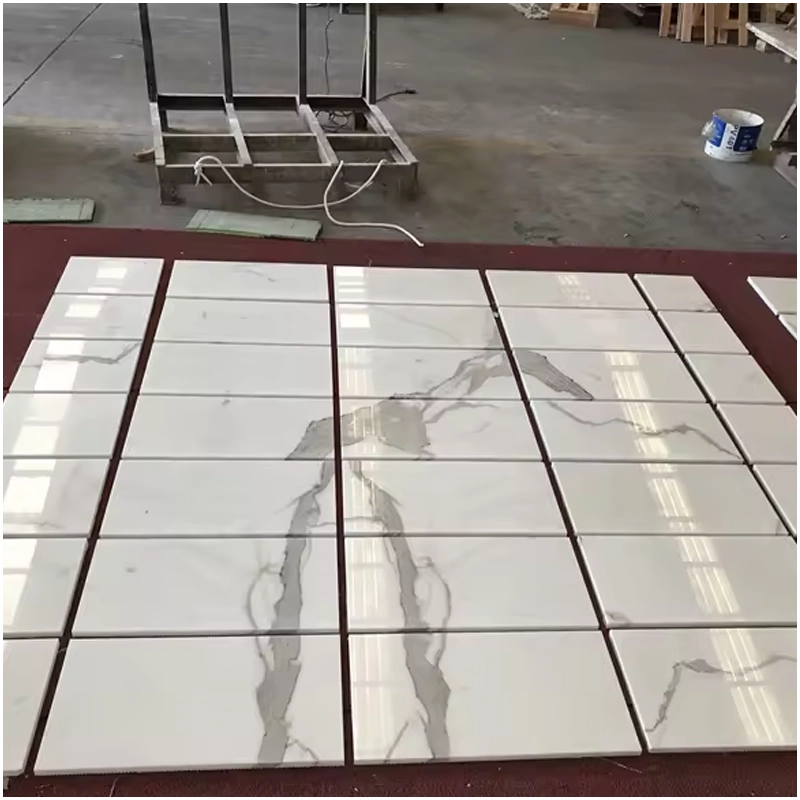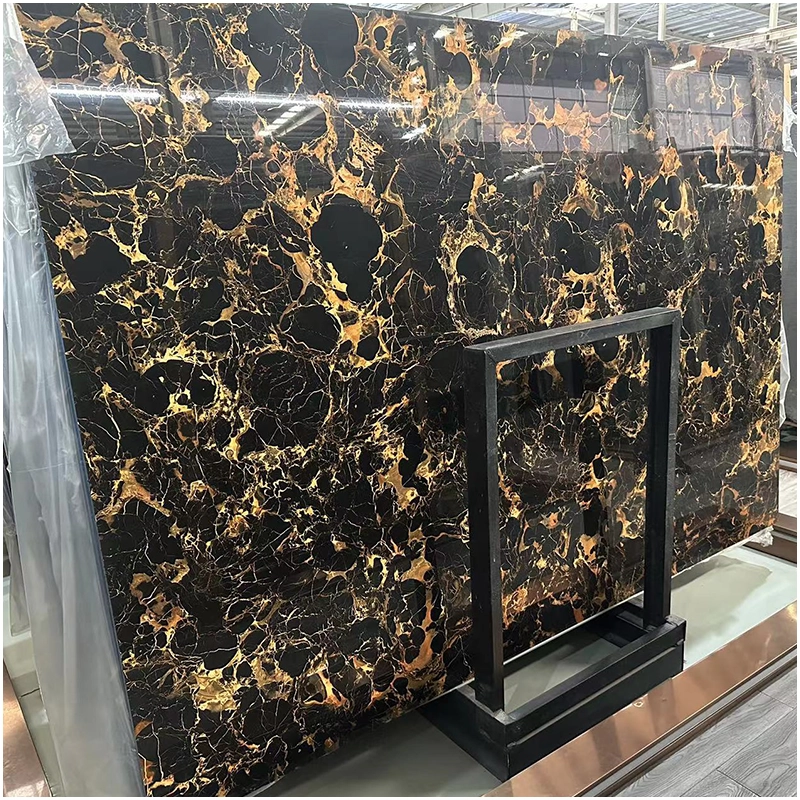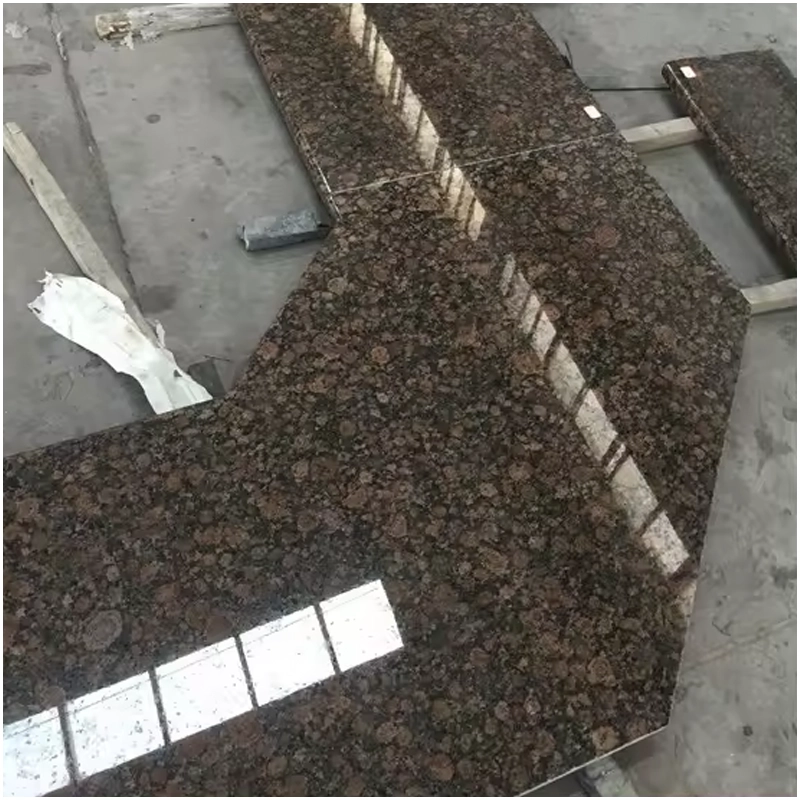Marble is the first choice.
The choice of marble color should take into account the owner’s personal taste, overall design and actual needs, and the atmosphere they want to create when decorating the villa.

Characteristics and related situations of marble tones
1. White marble
Features and benefits
The pure white tone and delicate texture of white marble, including Carrara White and Italian White, provide a refined and clean environment.
Light reflection: Due to the effective reflection of light by white marble, the space will appear brighter and more spacious.
Recommendations
Living room and hall: Using white marble walls and floors can make the living room and hall brighter and look larger overall.
Bathroom and kitchen: Kitchens and bathrooms can benefit from lovely and easy-to-clean white marble walls and countertops.
2. Black marble
Features and benefits
Black marble has deep black and gold or white textures, exuding mystery and richness, such as black gold sand and black wood marble.
Good stain resistance: Black marble is suitable for places with high frequency of use and has excellent stain resistance.
Recommendations
Living room and dining room: Using black marble tabletops and floors can enhance the modernity and grade of the area.
Bathroom: Using black marble can create a chic and exquisite atmosphere in the bathroom.
3. Gray Marble
Features and Benefits
Simple and Modern With its natural veins and understated tones, gray marbles such as Atlanta and Gray Raphael are perfect for modern minimalist decor.
Versatile Color: Gray marble can provide a harmonious and cohesive overall effect and is easy to mix with different colors and materials.
Recommendations
Living rooms and bedrooms can be simple and modern with gray marble walls and floors.
Bathrooms and Kitchens: Both spaces can benefit from elegant and practical gray marble walls and counters.
4. Brown and Beige Marble
Features and Benefits
Pure and Warm: The natural veins and warm tones of brown and beige marble, including Imperial Brown and Beige Marble, create a comfortable and warm environment.
Brown and beige marble is rich in variation, and a variety of veins and tones can be selected to meet specific requirements.
Recommendations
Living Rooms and Bedrooms: Walls and floors of brown and beige marble may improve the comfort level of this area.
Brown and Beige marble walls and counters are perfect for creating a cozy dining area and a practical kitchen.
5. Green and Blue Marble
Features and Benefits
Special and organic: Peacock Green and Blue Pearl marble, like other green and blue marbles, have a natural and unique beauty in color and texture.
Decorative: These marble tones can be the center point and focal point of a room.
Recommendations
Living and dining rooms: Using a backdrop wall and green and blue marble flooring can add layering and visual impact to the area.
Use green and blue marble in bathrooms and terraces to create a natural, airy feel.
Marble Countertop Details
Aesthetic Features
Because marble countertops have such unique visual qualities, any room may appear more ornate and sophisticated.
Rich colors: From deep black to pure white, marble surfaces have a wide range of colors to accommodate a variety of decorative designs.
Unique textures: Marble has naturally changing textures, so each countertop made from it is unique and exudes an artistic atmosphere.
High gloss: Polished marble countertops can reflect light, making the room look brighter and more spacious.
Physical Features
Marble has a beautiful surface and excellent physical properties, suitable for a wide range of applications.
High hardness: Suitable for places with frequent use, marble is wear-resistant and scratch-resistant.
Good heat resistance makes marble surfaces suitable for placing hot pots and baking sheets directly without causing damage.
Durability: As long as they are properly maintained, marble countertops can last for many years. They are strong and durable.
Shelf Life of Marble
Marble is a natural stone that has no “shelf life” and, unlike other biological materials, does not break down over time. But many factors, including use, care, and atmosphere, can affect the durability and longevity of marble.
Given the right environment, marble can last for hundreds of years. Marble was used in many historic buildings and sculptures that are still well preserved today.
Application: How marble is used can also affect its longevity. Since marble used as kitchen countertops often comes in contact with acidic materials, it may eventually lose its luster.
Proper care of marble can greatly extend its life. This includes daily sealing and cleaning, as well as avoiding the use of chemicals that can harm the stone.
Hardness and chemical resistance are two physical and chemical properties of marble that can affect its durability.
Storage conditions: If marble goods or materials must be stored for a long time, keep them in a dry, dark, well-ventilated area away from direct exposure to heat and humidity.
Processing and handling: Another factor that affects the preservation of marble is the quality and skill of the marble during these processes.
The long-term performance of marble can also be affected by the environment in which it is installed and applied.

Conclusion
Choosing the ideal marble shade for your villa decoration requires careful consideration of beauty, practicality and overall style. White marble is suitable for bright, elegant rooms; black marble is suitable for gorgeous modern design; gray marble is suitable for straightforward modern style; brown and beige marble are suitable for warm, natural environments; green and blue marble are suitable for unusual natural decorative effects. Choosing the ideal marble shade according to certain requirements and tastes may bring special charm and value to your property.







